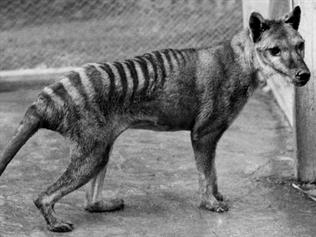295 – What is a threatened species worth?
There are around 1800 species included on Australia’s national list of threatened species of fauna and flora. The most severely threatened category, “critically endangered”, includes 6 mammals, 16 birds, 8 fish, 9 reptiles, 5 frogs, 25 other animals and 148 plants.
My feeling is that the general public is more concerned about threatened species than about many other environmental issues. There is something horrifying about the thought of extinction that resonates with most people to some extent.
Nevertheless, our performance at improving the status of threatened species is generally poor, in part because of a lack of funding available to address the problems.
 Researchers have attempted to measure the level of public concern about threatened species in a variety of ways. Economists have most often measured it using surveys to elicit people’s willingness to pay to protect a species, or their willingness to trade-off species protection against other benefits that they care about.
Researchers have attempted to measure the level of public concern about threatened species in a variety of ways. Economists have most often measured it using surveys to elicit people’s willingness to pay to protect a species, or their willingness to trade-off species protection against other benefits that they care about.
The Department of the Environment (as it was then) asked us to review the existing evidence from this body of research. The results are available online here. Here is the abstract from the report:
Literature on non-market valuation (NMV) of threated species and threatened ecological communities was collated and reviewed. We reviewed 76 papers, of which seven were from Australia. There is strong evidence that the broader community does support and is willing to pay for protection and recovery of threatened species. In many cases, the estimated non-market values far exceed the expenditure that would be required to protect or recover the species. However, there are significant gaps in the literature, particularly for threatened reptiles, plants, insects and non-charismatic species. There are no NMV studies of threatened ecological communities. We identify cases where evidence about non-market values has had a notable impact on the management or funding of threatened species. There are many such cases. However, overall utilisation of NMVs in decision making about threatened species is low and there is great potential for benefits if its utilisation is increased. Barriers inhibiting such an increase include lack of awareness of economics in relevant organisations, lack of existing economics capacity in those organisations, the limited volume of existing evidence about NMVs for threatened species and ecological communities, and a lack of time and resources to undertake economic analysis. We make suggestions for future directions for research and capacity-building.
Further reading
Pandit, R., Subroy, V., Garnett, S.T., Zander, K.K. and Pannell, D. 2015. A review of non-market valuation studies of threatened species and ecological communities. Report to the National Environmental Science Programme, Department of the Environment, Canberra. 18 December 2015. Full report here.
Richardson, L. and Loomis, J. (2009). The total economic value of threatened, endangered and rare species: An updated meta-analysis, Ecological Economics 68(5), 1535-1548. IDEAS page
A belated question…
Does anyone actually validate the results of estimations of the non-market values of assets?
It is one thing to ask Joe Public what they would be prepared to pay to preserve/conserve/manage a threatened species/ecosystem, but until payment is requested, the estimated value is hypothetical.
I can accept methods such as choice modelling where two or more options are presented, but to use such methodology to estimate value under a do something/do nothing scenario would seem to be rife with speculation.
Things get even worse where the outcome of the proposed actions/expenditure is not guaranteed (and how many wildlife managers could guarantee that a threatened species will still be around as a result of their actions?).
Appreciate the value in having some estimation of non-market values in trying to establish a preferred approach to wildlife management. Glory knows the estimation of market benefits of management can have wide error margins, depending on the assumptions underpinning such analyses, but to then throw in non-market values with (probably) much wider error bands, would seem to carry a high risk of “garbage in, gospel out”…
Hi Les
Good question. Yes, there is a huge literature, with lots of clever people worrying about validity, testing approaches and trying to develop improved methods. It’s a really active area of research. Yes, hypothetical bias is an issue, but not as serious an issue as you might expect (tested by asking people to actually pay what they said they would be willing to pay).
It is certainly true that surveys are imperfect tools. Humans are so complex and changeable, sometimes biased, sometimes limited in their capacities, and always prone to be influenced by the way a question is asked, that one always has to treat survey results as indicative, rather than precise. That’s an unavoidable reality.
On the other hand, it’s clearly better to have indicative information rather than no information. I’ve done some quantitative modelling to test this proposition, and was actually surprised at how true it is. See http://ageconsearch.umn.edu/bitstream/163211/2/WP0001401.pdf
Finally, having done numerous analyses of environmental projects where I was trying to include ecological information and values, my observation is that the information about values is usually better quality than the information about the likely ecological impacts of the potential management options. But it’s not a matter of leaving either of them out. They are both essential for good decision making.
Somebody submitted a comment on the extinction rebellion on 14 October 2019. That is off topic for this post.